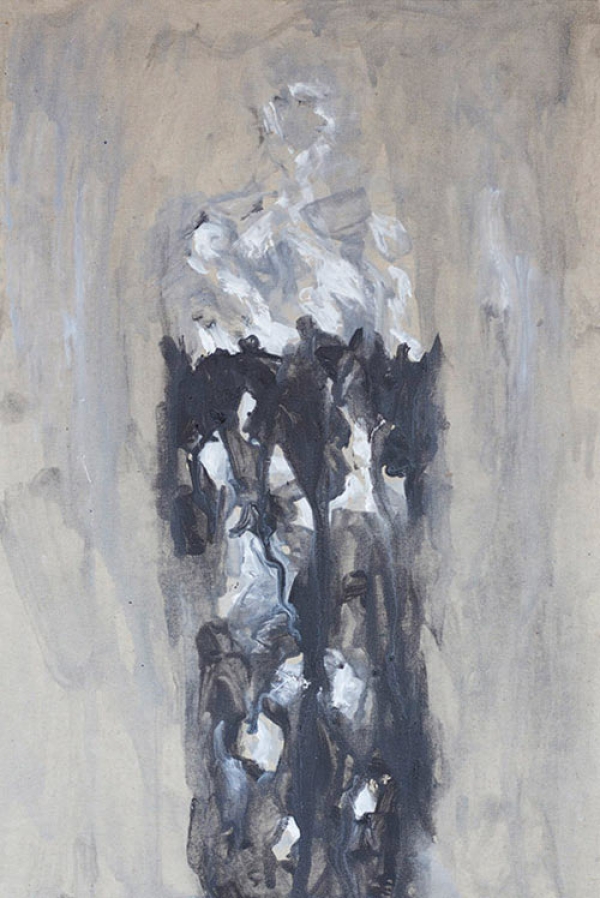In a remarkable speech, the artist told how, shortly after taking up residence in Horb three years ago, he attended the exhibition entitled The neighbours are being taken away in the Jewish Prayer Room in Horb. Here he read the biographies of over a hundred Rexingen citizens who were deported and murdered in extermination camps by the Nazis between 1942 and 1945. For Schmeißer, this was a crucial experience. The exhibition, together with his preoccupation with the contents of Jean Améry's book Beyond Guilt and Atonement, had a profound effect on him which demanded expression. He began work on paintings depicting the human figure in all its vulnerability and ambiguity.
One painting in particular, where the paint flows from the figure, seeming to drip down below the frame, captures in all its horror Améry's description of the torture inflicted on him by the Gestapo in Breendonk, Belgium, and subsequently in Auschwitz. Améry communicates to the reader his sense of the complete emptying of the self, of the personal disintegration caused by torture. Alone in that room in Breendonk, utterly at the mercy of sadists and with no hope of help from outside, he once and for all lost faith in humanity. As he wrote: "A victim of torture can never again feel at home in this world." Schmeißer repeated Améry's conviction that such horror can recur at any given time. The rise of anti-Semitism and of homophobia as represented by the PEGIDA movement in Germany, reminds us that "the cruelty of man to man" is not confined to any one period in history. In a final appeal, Schmeißer proposed the philosophy of love - with its implications of solidarity - as the only bulwark against hatred and discrimination.
16 March 2015
Published in News
Report about the opening of the exhibition: "Is that a human being?"

On Holocaust Memorial Day, an exhibition of K.H. Schmeißer's paintings entitled 'Is that a human being?' was opened in the former Jewish synagogue in Rexingen. The paintings show figures with obvious human contours, all in various stages of disintegration.
 Deutsch
Deutsch
 English
English